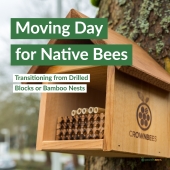After reading that Hydrogen Peroxide could be used as a pest management tool to dissolve soft bodied insects I wondered what effect it would have on developing mosquito larva that have been breeding in my compost tea buckets despite adding plant matter that I thought would kill them (tobacco, ghost pepper, marigolds, nasturtium, neem). So I added a half cup each to two five gallon buckets that were full of larvae and then a full cup into two other 5 gallon buckets with larvae. The next day in both of the buckets with the full cup, and in one of the buckets with a half cup the larvae were dead. (I used 3% Hydrogen Peroxide, agricultural strength would require far less.)
Now obviously a better long-term solution would be to put netting over the buckets, however I've found the aeration from the Hydrogen Peroxide eliminates the anaerobic odor from fermenting comfrey leaves and at the right dosage (small diluted amounts) I have read it it can aerate roots and stimulate growth.
In Arkansas summer's we get a lot of rain all at once followed by long droughts, so saving rainwater is crucial. Hopefully this technique helps in the event you forgot to cover your rain-barrel before the skeeters got in.
For those who don't know Hydrogen Peroxide is just H2O2, so essentially water with an extra oxygen. After all the extra oxygen molecules are released you're left with just water.
Any thought or concerns with this technique? Anybody know of any plants that when added to compost tea, prevent larvae from developing in the first place?


